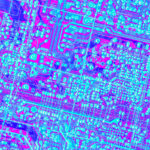A recent study published in the Archives of Sexual Behavior sheds light on the link between men’s habitual body gaze behavior and problematic attitudes related to sexual objectification. The researchers found that men who frequently direct their attention toward women’s bodies are more likely to accept harmful attitudes, such as rape myths, and have a higher likelihood of committing sexual assault. They also show less physiological reactivity when viewing images of partially dressed injured women.
Sexual assault remains a significant issue in many countries, including Australia and the United States, where 15-20% of women report having been assaulted at some point in their lives. Researchers have long sought to identify social and psychological markers that can predict the risk of sexual assault perpetration.
While various attitudes and behaviors related to sexual aggression have been studied, they are often difficult to measure reliably. Sexual objectification of women, where women are viewed primarily as objects for sexual gratification, is one such precursor to sexual violence.
The researchers of this study aimed to explore whether a common, everyday behavior—body gaze—could serve as a reliable marker for problematic attitudes and behaviors. Body gaze behavior involves focusing on a person’s body parts rather than treating them as a whole person.
“The literature had long made assumptions about the importance of gaze behavior as a marker for sexual objectification but few studies had reported empirical evidence supporting these assumptions,” said study author Ross Hollett, a lecturer at Edith Cowan University.
“Our study was designed as a follow up to our 2022 paper, which pointed towards body gaze as an important marker for potentially problematic attitudes and we wanted to further establish this using a greater variety of methods (physiological and implicit). We also wanted to provide further validation evidence for our brief body gaze scale so that it might gain further traction with other researchers in the field and enable research without the need for eye tracking equipment.”
For their study, the researchers employed a combination of self-reported surveys, implicit association tests, and physiological measurements. The study involved 110 heterosexual men aged between 18 and 62, most of whom were Caucasian. Participants completed several questionnaires designed to measure their gaze habits, attitudes toward rape myths (such as blaming victims for sexual violence), and any past experiences of sexual assault perpetration. One key measure, the Pervasive Body Gaze Scale, asked men to report how often they focus on women’s bodies in everyday situations. This provided a self-reported measure of objectifying behavior.
In addition to these self-reports, the researchers used an implicit association test to assess participants’ unconscious associations between sexual arousal and aggression. This test required participants to quickly categorize erotic and aggressive words, measuring how strongly they link sexual content with either aggression or gentleness.
Participants were also shown images of women in different conditions: fully clothed, partially clothed (in underwear), and partially clothed with visible injuries. During this image exposure, the researchers monitored participants’ physiological arousal using skin conductance response, which measures changes in sweat activity to indicate emotional engagement. After viewing the images, participants also rated how sexually aroused they felt by each image.
The researchers found that men who reported higher levels of pervasive body gaze were more likely to accept rape myths, such as believing that women are to blame for being sexually assaulted. These men were also more likely to report having engaged in unwanted sexual advances, suggesting a direct link between body gaze behavior and actual sexually aggressive behavior.
“People’s visual attention is an important signal for what they are prioritizing in their environment,” Hollett told PsyPost. “For men who tend to evaluate women primarily for the value of their bodies, they may develop habitual gaze patterns which reflect this. Unfortunately, this tendency to evaluate women’s bodies more so than their other attributes is likely to be one pathway to increased sexual assault risk.”
“That is, men who place undue value on women’s bodies may be more likely to neglect women’s social and emotional states, which may facilitate treating women like a sexual object. This assumption should be interpreted with consideration that there are likely other facilitating factors that actually increase the possibility of perpetration (such as low self-control, diminished empathy and the potential influence of substances).”
Furthermore, the implicit association test revealed that men with a higher tendency for body gaze were more likely to link sexual arousal with aggression. This suggests that for these men, sexual content is more closely tied to aggressive impulses, even if they may not openly express such associations.
Physiologically, men with higher body gaze tendencies showed less emotional reactivity (measured by lower skin conductance) when viewing images of injured women, which the researchers interpreted as a form of desensitization to violence against women. These same men reported higher sexual arousal when viewing images of partially dressed women, especially when the women appeared injured. This finding hints at a troubling association between sexual objectification and diminished empathy for victims of violence.
“When using multiple methods (such as self-report, physiological and implicit) we tend to expect relatively low correlations between scores on our instruments because psychological variables are notoriously hard to capture with high validity and reliability,” Hollett explained. “However, we were surprised that our self-report body gaze scale correlated significantly with all the other measurement techniques we used. This gave us some confidence that even self-reported gaze behavior habits are valuable for understanding other processes that are more difficult to measure at scale.”
As with all studies, there are limitations that must be considered. First, the sample was predominantly composed of young, Caucasian men, limiting the generalizability of the findings to other demographic groups. The study also relied on self-reported data for certain measures, such as rape myth acceptance and sexual assault history. While steps were taken to ensure anonymity and privacy, the sensitive nature of these topics could still lead to underreporting or response bias.
Furthermore, while the study provides evidence of correlations between body gaze behavior and attitudes related to sexual aggression, it cannot establish causality. In other words, it is unclear whether frequent body gaze leads to sexual aggression or if both behaviors stem from a common underlying factor, such as personality traits or past experiences.
“Readers should always recognize that correlational research is not causal and, as mentioned above, any assumptions should be interpreted with consideration that there are likely other facilitating factors that actually increase the possibility of perpetration (such as low self-control, diminished empathy and the potential influence of substances),” Hollett noted. “Sampling is always a limitation as we observed our findings in largely Caucasian and heterosexual men who were recruited from a university community.”
Nevertheless, the study adds to the growing body of evidence that pervasive body gaze is more than a superficial habit—it is linked to deeper attitudes and behaviors that contribute to the objectification and mistreatment of women.
“At this stage, we hope that our two papers offer sufficient evidence to convince other researchers to use our brief body gaze scale in their work,” Hollett said. “We hope that this will facilitate further research on this topic. In particular, we would love to see this scale being used in more applied settings, such as screening or intervention contexts, to determine if it offers predictive utility and/or show changes in response to an intervention.”
The study, “Evidence That Pervasive Body Gaze Behavior in Heterosexual Men Is a Social Marker for Implicit, Physiological, and Explicit Sexual Assault Propensities,” was authored by Ross C. Hollett, Hannah West, Candice Craig, Lorna Marns, and James McCue.




